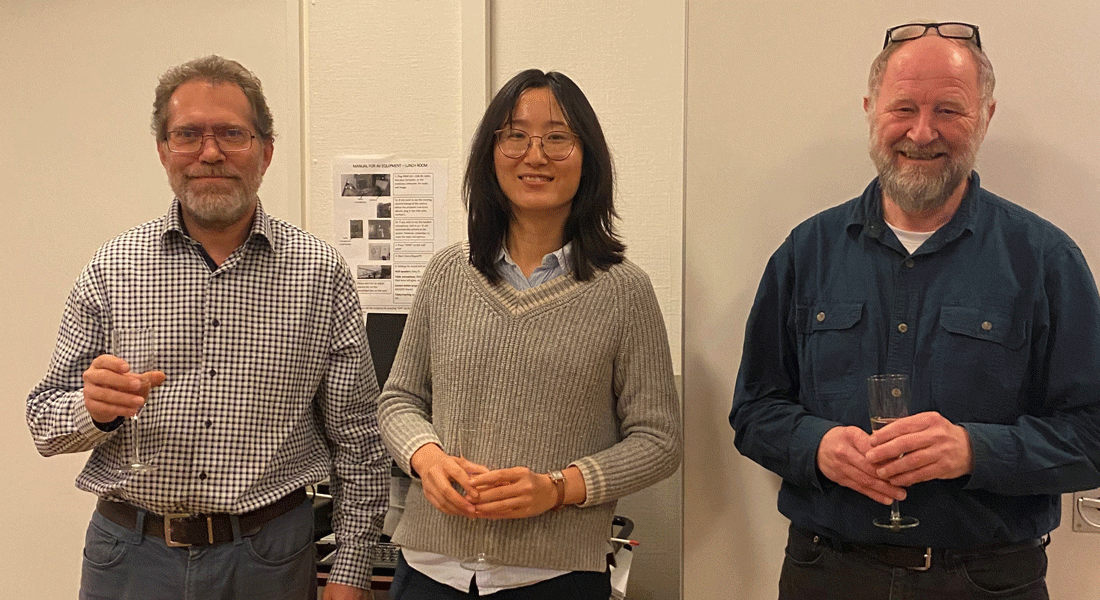Congratulations to Jiamei Lin
Congratulations to Jiamei Lin at Physics of Ice, Climate and Earth who successfully defended her PhD thesis on 18 November 2022, and obtained the degree of Doctor of Philosophy.

Title: Global volcanism as seen in ice cores during the last glacial cycle:
Sulfate magnitude, climate forcing and probability of recurrence
Abstract:
Historical large sulfur-rich volcanic eruptions disturbed the radiation budget, blocked incoming sunlight, cooled the surface, altered the precipitation and temperature in the earth system due to the sulfuric acid aerosols in the atmosphere. Humans have limited knowledge about the sulfate magnitude, the frequency, and the probability of the occurrence of such large volcanic eruptions.The past volcanic sulfate signals are recorded in the ice sheets. The sulfate magnitude, climate forcing, and timing of the explosive volcanic eruptions can be reconstructed from an array of Greenland and Antarctic ice cores that cover the last glacial period. That will be beneficial for understanding the volcanic impact on climate and useful for forecasting future volcanic hazards.
This dissertation extends the volcanic sulfate deposition in Greenland and Antarctica during the second half of the last glacial period and the early Holocene (60-9 ka), and estimates the emission strength, the frequency, and the climatic forcing of large volcanic eruptions. There are 69 volcanic eruptions that have stronger emissions strength than that of the Tambora, 1815 AD eruption (Chapter 2).
Second, this dissertation compiles all available ice-core sulfate records and published sulfur isotope records to pinpoint, constrain the magnitude, and characterize the ~74 ka Toba eruption, which is proposed to be the largest volcanic eruption in the Quaternary. The estimated volcanic stratospheric sulfate loading of the eruption is 535 ± 96 Tg, that is 3.3 times that of the Samalas 1258 AD, 6.3 times that of the Tambora 1815 AD, and 9.7 times that of the Pinatubo 1991 AD. The continuous time-series of volcanic sulfate deposition, sulfur emission strength, and volcanic radiative forcing are derived for the period of 74.8-73.8 ka (Chapter 3).
Third, this dissertation estimates the recurrence rate and probability of global sulfur-rich volcanism based on the ice-core bi-hemispheric volcanic records over the Holocene and the last glacial periods (Chapter 4). In a statistical approach, the mean return time is estimated to be 434 years for volcanic eruptions larger than the Tambora 1815 AD eruption, and the probability of this magnitude eruption being observed in the next 100 years is around 19%.
Supervisor: Anders Svendsson
Evaluation Committee: Jørgen Peder Steffensen, Matthew Toohey, Chaochao Gao
